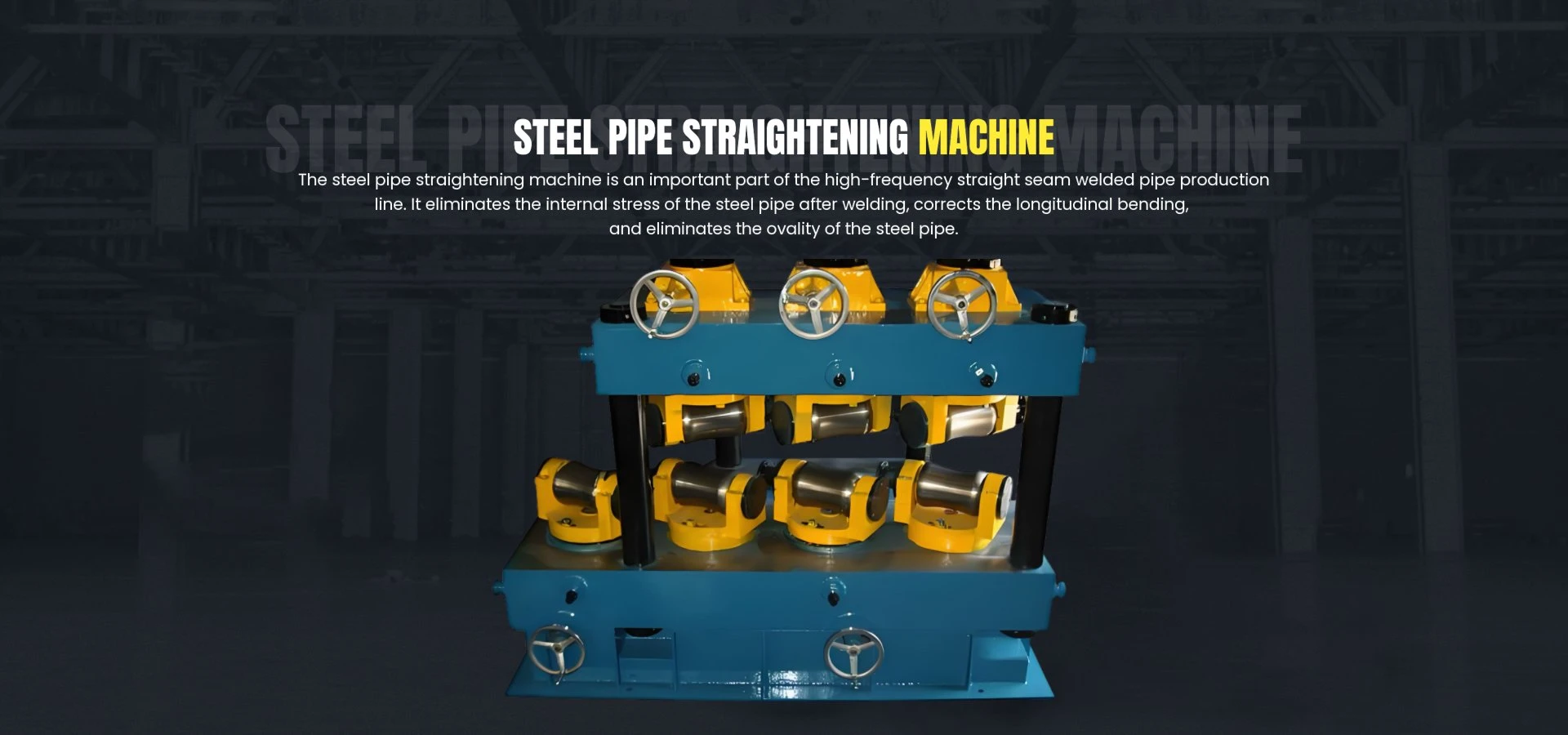sheet metal straightener machine
Understanding Sheet Metal Straightener Machines A Comprehensive Overview
In the modern manufacturing landscape, quality and precision are paramount. When it comes to the processing of sheet metal, achieving a flat, straight surface is essential for ensuring the integrity and performance of the final product. This is where sheet metal straightener machines come into play. These machines are indispensable in various industries, including automotive, aerospace, construction, and general manufacturing. This article delves into the workings, types, applications, and benefits of sheet metal straightener machines.
What is a Sheet Metal Straightener Machine?
A sheet metal straightener machine is a specialized device designed to eliminate bends, twists, and warps in sheets of metal, allowing for a uniform thickness and surface. These machines utilize a combination of rollers and pressure to flatten metal sheets, ensuring consistency in shape and size for subsequent processes such as cutting, welding, and forming. By ensuring the metal sheets are flat, straightener machines play a critical role in enhancing product quality and reducing material wastage.
How Do They Work?
Sheet metal straightener machines operate through a series of rollers, typically made of hardened steel, which apply pressure to the metal sheet as it passes through. The rollers may be arranged in various configurations, including two-roll, three-roll, or four-roll systems, depending on the desired level of adjustment and thickness of the material being processed.
1. Two-Roll Systems In a two-roll straightener, one roller is fixed while the other is adjustable. This allows for precise control over the amount of flattening applied to the metal sheet.
2. Three-Roll Systems These systems often provide better control for thicker materials. The three rolls engage the sheet differently, easing it through the machine while allowing slight adjustments to achieve the desired flatness.
3. Four-Roll Systems Four-roll machines offer the highest level of precision for straightening. With two upper rolls and two lower rolls, these machines can work on thicker materials and provide superior control over the flatness and uniformity of the sheet.
Types of Sheet Metal Straighteners
The market offers a variety of sheet metal straighteners tailored to different processing needs
- Manual Straighteners These machines require operator input to adjust settings and guide the sheet through the rollers. They are typically used for smaller operations or workshops.
- Automatic Straighteners Equipped with advanced sensors and automation technology, these machines can automatically adjust the pressure and align sheets, making them ideal for high-volume manufacturing environments
.- Hydraulic Straighteners Utilizing hydraulic power to control the pressure applied to the metal sheets, these machines are excellent for thicker materials and provide consistent results with minimal operator intervention.
sheet metal straightener machine

Applications of Sheet Metal Straightener Machines
The versatility of sheet metal straightener machines allows them to be used across a wide array of industries
- Automotive Industry Straightened metal sheets are essential for crafting various vehicle components, ensuring that they fit together accurately during assembly.
- Aerospace Precision is critical in the aerospace industry; straightened sheets help form structural components that meet strict safety and performance standards.
- Construction Whether for roofing, siding, or structural frames, straightened metal sheets ensure durability and compliance with building codes.
- Electronics In electronics manufacturing, straightened metal sheets are used in the creation of casings and supports for various devices.
Benefits of Using Sheet Metal Straighteners
Investing in a sheet metal straightener machine confers multiple benefits
- Enhanced Product Quality Consistent flatness aids in producing higher quality finished products, reducing defects during secondary processes.
- Reduced Material Waste A straightened metal sheet is less likely to warp or bend during manufacturing, minimizing waste and rework costs.
- Increased Efficiency Automated straighteners can boost productivity by speeding up processing times and reducing the need for manual adjustments.
- Improved Safety A well-straightened sheet reduces the risk of operational hazards during fabrication and assembly.
Conclusion
In summary, sheet metal straightener machines play a vital role in modern manufacturing processes. By ensuring that metal sheets are flat and straight, these machines contribute to higher-quality products, efficiency, and safety across a multitude of industries. As technology advances, the capabilities of these machines continue to evolve, making them an essential asset for any serious manufacturer looking to maintain competitive advantage in today’s fast-paced market.
-
High Frequency Straight Seam Welded Pipe Production Line-BzZhou Xinghua Machinery Equipment Manufacturing Co., LTD.|line pipe steel&welded gas pipeNewsJul.30,2025
-
High Frequency Straight Seam Welded Pipe Production Line-BzZhou Xinghua Machinery Equipment Manufacturing Co., LTD.|High Precision&Automated SolutionsNewsJul.30,2025
-
High Frequency Straight Seam Welded Pipe Production Line - BzZhou Xinghua Machinery Equipment Manufacturing Co., Ltd.NewsJul.30,2025
-
High Frequency Straight Seam Welded Pipe Production Line-BzZhou Xinghua Machinery Equipment Manufacturing Co., LTD.|Precision Welding, High EfficiencyNewsJul.30,2025
-
High Frequency Straight Seam Welded Pipe Production Line|BzZhou Xinghua|Precision Welding&EfficiencyNewsJul.30,2025
-
High Frequency Straight Seam Welded Pipe Production Line - BzZhou Xinghua|Precision Engineering&EfficiencyNewsJul.30,2025


